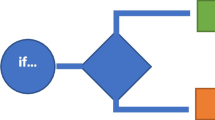Abstract
In order to identify the network attack elements better, and solve the nonlinear data multi-classification problem of the network attack elements, this paper presents a classification model and training method based on radial basis neural network. The model uses the training sample error to construct the cost function to solve the minimum value of the cost function and improve the classification accuracy. In the training process of the model, the K-mean algorithm is improved by constructing the average difference between the samples, the number of the hidden layer nodes and the initial value of the basis function center are determined, and the influence of the hidden layer structure on the classification accuracy is reduced. The learning rate in the gradient algorithm is optimized by Q learning method, and the interference of the learning rate to the training of the network parameters is reduced. The OLS algorithm is used to adjust the weights of the hidden layer to the output layer to improve the accuracy of the model classification output. The simulation results show that the model can solve the nonlinear classification problem of network attack well, and the average accuracy rate is improved by about 9% compared with the existing classification methods.







Similar content being viewed by others
References
Billings, S.A., Wei, H.L., Balikhin, M.A.: Generalized multi scale radial basis function networks. Neural Netw. 20, 1081–1094 (2007)
Bradley, P.S.: Mangasarian, L.K-plane clustering. J. Glob. Optim. 16(1), 23–37 (2000)
Zhu, L., Chung, F.L., Wang, S.: Generalized fuzzy c-means clustering algorithm with improved fuzzy partitions[J]. IEEE Trans. Syst. Man Cybernet.-Part B 39(3), 578–591 (2009)
Xiu, Y., Wang, S., Wu, X., et al.: The directional similarity-based clustering method DSCM[J]. J. Comput. Res. Dev. 43(8), 1425–1431 (2006)
Jinna, L., Bai, Y.P.: Research and simulation on RBFNN optimized by particle swarm algorithm. Appl. Mech. Mater. 303, 1431–1434 (2013)
Flyer, N., Lehto, E., Blaise, S., Wright, G.B., St-Cyr, A.: A guide to RBF-generated finite differences for nonlinear transport: shallow water simulations on a sphere. Lam. J. Comput. Phys. 231, 4078–4095 (2012)
Sun, D., Wan, L.M., Sun, Y.F., Liang, Y.C.: An improved hybrid learning algorithm for RBF neural network. J. Jilin Univ. (Sci. Ed.) 48(5), 817-–822 (2010)
Ding, J.C., Zhang, J., Huang, W.Q., Chen, S.: Laser gyro temperature compensation using modified RBFNN. Sensors 14, 18711–18727 (2014)
Yan, G.H., Lee, R., Kent A., et al.: Towards a Bayesian network game framework for evaluating DDoS attacks and defense. In: CCS’12 Proceedings of the 2012 ACM Conference on Computer and Communications Security. USA:ACM, pp. 553–566 (2012)
Hu, G.Y., Qiao, P.L.: An efficient improvement of CMA-ES algorithm for the network security situation prediction. Open Autom. Control Syst. J. 7(1), 1499–1517 (2015)
Aleroud, A., Karabatis, G., Sharma, P., He, P.: Context and semantics for detection of cyber attacks. J. Inf. Comput. Sec. 6(1), 63–92 (2014)
Salah, S., Maciá-Fernández, G., Díaz-Verdejo, J.E.A.: A model-based survey of alert correlation techniques. Comput. Netw. 57(5), 1289–1317 (2013)
Bateni, M., Baraani, A., Ghorbani, A.A.: Using artificial immune system and fuzzy logic for alert correlation. J. Netw. Sec. 15, 160–174 (2013)
Wang, C.H., Chiou, Y.C.: Alert correlation system with automatic extraction of attack strategies by using dynamic feature weights. J. Comput. Commun. Eng. 5(1), 1–10 (2016)
Han, L.Y., Gao, B., Yang, L.: Study of temperature compensation for laser gyro SINS of land-based missile. Tactical Missile Technol. 4, 81–85 (2013)
Shen, J., Miao, L.J., Wu, J.W.: Application and compensation for startup phase of FOG based on RBF neural network. Infrared Laser Eng. 42, 119–124 (2013)
Endsley, M.R.: Final reflections: Situation awareness models and measure. J. Cognit. Eng. Decis. Mak. 9(1), 101–111 (2015)
Lenders, V., Tanner, A., Blarer, A.: Gaining an edge in cyberspace with advanced situational awareness. Sec. Privacy IEEE 13(2), 65–74 (2015)
Li, M.Q., Tian, J., Chen, F.Z.: Improving multiclass pattern recognition with a co-evolutionary RBFNN. Pattern Recognit. Lett. 4, 392–406 (2008)
Endsley, M.: Situation awareness misconceptions and misunderstandings. J. Cognit. Eng. Decis. Mak. 9(1), 4–32 (2015)
Sedaghatbaf, A., Azgomi, M.A.: Attack modeling and security evaluation based on stochastic activity networks. Sec. Commun. Netw. 7(4), 715–737 (2014)
Wang, Y.: Research on network security situation prediction based on Markov game theory. Int. J. Sec. Its Appl. 9, 301–308 (2016)
Chuang, A.S., Wu, F., Varaiya, P.: A game-theoretic model for generation expansion planning: problem formulation and numerical comparisons. IEEE Trans. Power Syst. 4, 885–891 (2001)
Wang, Y.Z., Yu, M., Li, J.Y., et al.: Stochastic game net and applications in security analysis for enterprise network. Int. J. Inf. Sec. 11(1), 41–52 (2012)
Hu, G.Y., Qiao, P.L.: Cloud belief rule base model for network security situation prediction. IEEE Commun. Lett. 20(5), 1–1 (2016)
Acknowledgements
This work was supported in part by Key Science and Technology Project of Jilin Province (20160204019GX) and National High-tech R&D (863) Program of China (2015AA015701).
Author information
Authors and Affiliations
Corresponding author
Rights and permissions
About this article
Cite this article
Wang, H., Gu, J., Di, X. et al. Research on classification and recognition of attacking factors based on radial basis function neural network. Cluster Comput 22 (Suppl 3), 5573–5585 (2019). https://doi.org/10.1007/s10586-017-1371-9
Received:
Revised:
Accepted:
Published:
Issue Date:
DOI: https://doi.org/10.1007/s10586-017-1371-9




